

|
◦ Historical Context & Selected Advertisements ◦ Details About My 720 Keyboard ◦ Schematics ◦ Large Scale Systems Museum TVT 720 Keyboard ◦ Links to Sanders Resources |
|
The Sanders Associates 720 was a terminal from 1967, intended to interface with an IBM System/360 through a special interface box.
Some Sanders 720 variants were most notably present within the Launch Control Center at Kennedy Space Center for monitoring the status of Saturn V rockets starting in the late 60s.
NASA units seen in historical photos and films tend to be in a white color scheme, rather than dark blue, and they are directly integrated into the consoles within the firing room.
Not too much us known about the circuitry of the terminal itself, nor the interface boxes that drove them.
We do know that the character generation method is more vector-like than raster, with the beam following pre-set paths to draw each character.
As far as I'm aware, no complete examples exist as of the modify date of this page. A few examples of the keyboards seem to be out in the wild in the hands of a few folks. I can think of atleast 6 off the top of my head, and atleast 2 display chassis. The Sanders 620 and Sanders 722 are also model numbers we see in circulation at times, they're all related. Hopefully if you have one and are looking for information, what's presented here may be of help to you. If you've got information, photos, or links to those sorts of resources, please don't hesitate to reach out and contact me. Some time in the mid-1970s, hobbyist electronics and computer magazines began running ads selling off surplus keyboards and monitor components from 720s. The 720 keyboard became a common option for individuals looking for an inexpensive ASCII keyboard for hobbyist terminal and computer projects. It was ubiquitous enough that Byte Magazine included an article about reverse engineering surplus keyboards, featuring the 720. You can read that article here: Byte Magazine 1975 Issue #1 Here are a few examples of ads from mid-70s magazines: |
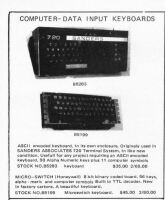
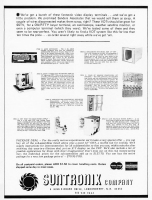
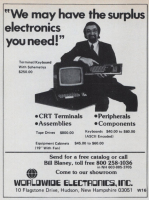
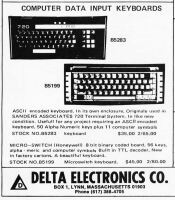
|
|
I acquired my Sanders 720 keyboard in late 2022 from a friend, along with photographs of schematics.
I've been learning how to make use of mine with my Ohio Scientific 440 video board, as OSI suggested the keyboard to be used with that system.
I was initially planning to use it with another project in the 1970s homebrew style, but since OSI mentioned it by name in the 440 documentation, that seemed like the most appropriate application for it.
My intent as I work to repair it is to avoid irreversable changes.
No harvesting keys, no replacing logic with a microcontroller, or any other such nonsense.
However, due to the limitations of the keyboard, and missing functions, I also felt compelled to find a way to augment it within that stated ruleset.
Formally, mine is a 722M520, serial No. 00639E2D4, with part date codes as late as spring of 1972 inside. The components are mostly original 7400 series spec, with a few other things like a pair of Fairchild 9601's, and an LM201 op-amp. The keyboard outputs 7-bit ASCII... sorta, but we'll get to that -- see chart for details. There appear to be 2 main design variants of internal structure. Earlier models like the one seen in the Byte article use a separate logic board containing the chips and diodes connected with an internal wiring harness to the key switches themselves, held together in a frame. Mine is a later model where the switches are soldered in place to the PCB and held in with a frame. Above the number keys are 4 indicator lamps: Power, Block, Line, and Field. Some units only have the Power lamp, and others have an additional Hard Copy lamp. If you need spares, they're 16V signal lamps seen on telephone switchboards, among other places. I was able to source a bag of Sylvania 16 ESB spares on ebay for not much money. It uses a non-standard ASCII variant, and is missing lower case letter functionality entirely. Delete is on the incorrect key code, Control is missing entirely, etc. My solution is to add in an interposer board between a card edge connector inside of the keyboard housing with some extra logic and a few extra keys to sit in place of the blanks. I've also fabricated a DC-37 to DB-25 adapter board to make interfacing with it much easier. When I've gotten all the bugs worked out, I'll be posting my design files here for others who might have need of them. The hope is that in the event of the rest of a Sanders terminal surfacing, this could be reverted to stock with minimal effort to bring such a machine to life again. |
|
Power Requirements: GND on pin 26 5V DC on pin 28 +15V DC on pin 10 * -15V DC on pin 11 * *15V DC minimum, can be as high as 18V DC positive and negative rails must be mirrored compared to ground or the keyboard will NOT work! Data Output: Data 1 on pin 1 Data 2 on pin 2 Data 3 on pin 3 Data 4 on pin 4 Data 5 on pin 5 Data 6 on pin 6 Data 7 on pin 7 Keyboard Ready aka Strobe (active low) on pin 21 Special Functions: Acknowledge (active low, input) on pin 12 Keyboard Depress aka Repeat (active low, output) on pin 13 Lamp Bus on pin 22 Block Lamp (B) on pin 32 Field Lamp (F) on pin 33 Line Lamp (L) on pin 34 |

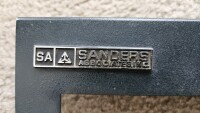
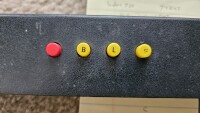
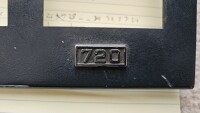


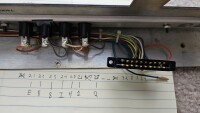

|
|
Here are the schematics and documents provided to me when I purchased the keyboard.
I've got them in both PDF form, and individual images.
Some of these apply to my unit, but others refer to equipment that may be missing.
Make sure to cross-check the schematics against your keyboard.
Sanders 720 schematics collection PDF |
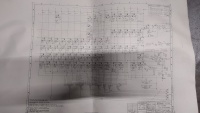
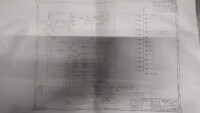
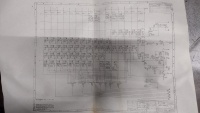
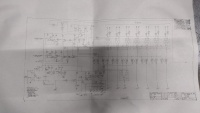
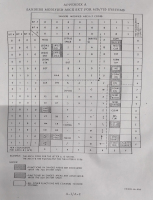
|
| Here are some of the photos of my reverse engineering process. This includes my testing, interposer boards, and pinouts that I've gleaned. Take my scrawlings with a grain of salt. |
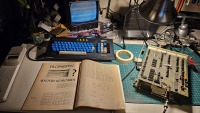
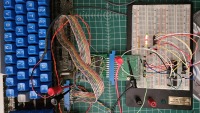
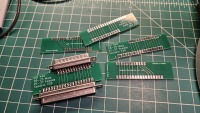
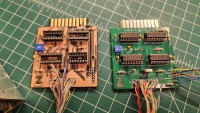
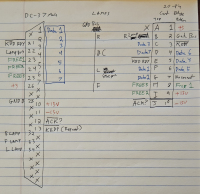
|
| The Large Scale Systems Museum has a Southwest Technical Products Corp. CT-1024 TV Typewriter II kit on display. The example they have uses another variant of the Sanders 720 keyboard, as the kit would not have necessarily included an ASCII keyboard, so anything available would do. I'm guessing this is an older example, due to the difference in badging. The keycaps are somewhat different, and it has a shorter spacebar. |


|
|
Byte Magazine 1975 Issue #1 - Article about reverse engineering surplus ASCII keyboards featuring the Sanders 720 Sanders Associates documents on Bitsavers - Providing some context to the Sanders 720 terminal Sanders Associates 720 on the Terminals Wiki - Information on the terminal itself ACE Computer System featuring a Sanders 720 - An 1802 based kit example interfaced with a Sanders 720 keyboard |
created with igal2 2.2